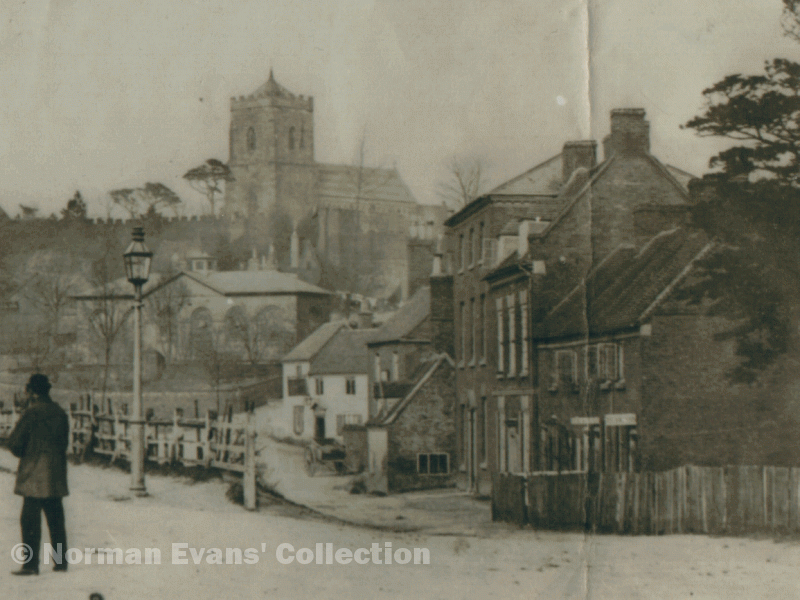At the Railway Enquiry of 1859, the merits of two possible terminus stations in Sutton were considered, the site of one of them being near Lower Parade. A witness, Dr. Oates, said “a great accumulation of moisture arises in that valley - it is such a cold spot it is enough to give any railway passengers the ague that go to a station there”. No doubt those who could afford it lived on the more fashionable higher ground, but for the eighty people living in the sixteen houses there, Lower Parade, or the Dam as it was then known, was home.
In the Middle Ages Lower Parade formed part of the dam of a large mill pool. The dam was wide and strong enough to form a causeway carrying the main road to Sutton across the marshy valley of the E brook; below the dam was the watermill where all the grain grown in Sutton was ground into flour. Houses built beside the causeway had a fine outlook across the pool to Sutton Park.
A freak storm and flash flood in 1668 damaged the dam, and soon afterwards the pool was drained and the mill fell out of use. The view from the houses was partly blocked when the road level was raised and its course altered in 1824, taking the through traffic away from Lower Parade. The view of the Park was completely cut off when the railway embankment across the valley was constructed in 1862. By that time the old mill was being used for curing leather, a very smelly trade, and on Fair days the space between Lower Parade and the Parade was used by horse-dealers - no longer a desirable neighbourhood.
Aside from the two innkeepers, the people who lived in the houses on Lower Parade in the 1850s were mostly farm workers and semi-skilled artisans, but the picture shows what a strange mixture the buildings were. The white house with the square sign-board was the Dog Inn, and the three-storey building was the Coach and Horses inn, while in the single-storey house next door lived Peter Pimlott the shoemaker. Some of the families were large - there were forty children altogether - handy for the Town School which can be seen in the background.
